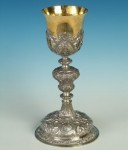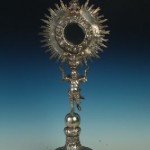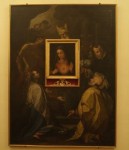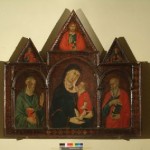The Museum of Sacred Art was created by an agreement between the Municipality of Tavarnelle Val di Pesa and the parish of San Pietro and Santa Lucia in Tavarnelle, with the collaboration of the Archbishop’s See of Florence, the Regione Toscana, the Office of Architectural and Environmental Heritage and the Office of the Artistic and Historical Heritage of Florence.
Inaugurated in 1989 on the first floor of the rectory of San Pietro in Bossolo, the Museum has collected artistic objects, which come from the ancient parish of San Pietro and from that of San Donato in Poggio. The institute grew out of the desire to catalog, conserve and protect the artistic heritage of the province and the Florentine surroundings.
The Romanesque parish church has three naves divided by five equally wide spans, supported by simple quadrangular pilasters with low plinths that jut out and a simple frame at the top in place of the capital, another ornamental motif is a molding with abrupt changes in width that follows the bowing of the arch along its upper surface.
From the cloister, one can enter the rectory, which houses the Museum of Sacred Art. The legacy of the mother church is represented by the precious pieces of jewelry, among which are found an astylar cross datable to the 13th century, some reliquaries of carved wood and some examples of liturgical vestments belonging to ancient paraments. Among the admirable pieces of silverwork are two astylar crosses from the 1200’s, their engravings portray the usual iconography of mourners at Christ’s side and the symbols of the four evangelists at the ends of the limbs, a high-footed chalice decorated with both straight and undulating lines from the 15th century that still retains the enamelwork on its stem joints; two thuribles, also from the 15th century, one temple-shaped and the other vaguely pyramidal, still following a 14th century model.
A considerable number of Florentine and Tuscan furnishings from the 1600’s and the 1700’s are also present; some outstanding pieces are a chalice from San Bartolomeo in Palazzuolo and some Neapolitan silverwork from the 19th century, with the exception of the beautiful monstrance made by Nicola De Angelis in 1706.

















